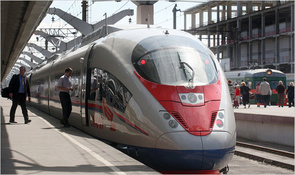
urbansheep@gmail.com
Siemens Fills Russia’s Need for a High-Speed Train - NYTimes.com - http://www.nytimes.com/2009...

|
25 сентября 2009 в 19:17 с Bookmarklet
дмитрий песков
Phil Smirnov
"The result of the little-known program was a slate-gray, round-nosed locomotive called the Sokol, Russian for falcon, that petered out soon after the Soviet Union did. The prototype achieved a top speed of only 143 miles an hour — hardly breaking a sweat by high-speed standards.
But the fall of the Falcon created an opening for Siemens.
This December, high-speed trains designed by the German conglomerate and adapted for Russian winters will ply the rails between St. Petersburg and Moscow. But Siemens hopes their final destination will be the last laggard of the high-speed age: the United States." - × × ×
“Here as elsewhere, high-speed trains will compete with airlines. The 401-mile trip from downtown Moscow to downtown St. Petersburg will be 3 hours and 45 minutes. The average flying travel time is five hours, including the trips to and from the airport, check-in and security clearance. The four-times-a-day service will trim 45 minutes from the fastest train service now. To achieve this, the Russian state railway spent $485 million upgrading the track and $926 million for eight Sapsan trains and a 30-year service agreement, at today’s exchange rates.” - × × ×
© 2015 FriendFeed (and Clio archiver)